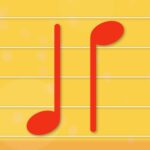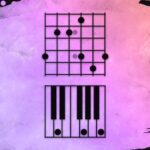Build Your Skills
Learn music theory Train your ears Track your tempoRead Now
Get the Newsletter
Categories
- | BeatMirror (10)
- | HearEQ (11)
- | Waay (22)
- | WaayFinder (1)
- Audio (16)
- For musicians (34)
- Guitar (2)
- Music theory (15)
- News (42)
- Startup stories (2)
- Tutorial (4)
Keep in Touch
About Ten Kettles
We love music, we love learning, and we love building brand new things. We are Ten Kettles.
Read more >-
May 31, 2022
Song Study: Black Summer (RHCP)
Structures and Songwriting
It’s one thing to combine chords into progressions or fit a melody to that progression (and vice versa), but there comes a point in songwriting where you have to ask: how do I pull all these parts I’ve written together? You have a verse part, you have a chorus part, maybe a bridge or outro or instrumental idea. But how do you turn that into a song?
It could end up being a completely inspired process. Sometimes you just know how it’s all supposed to go together and the song is quickly complete. Amazing. But for many songs, we may have to put some real work into the process. But how do we start? One great way forward is to try some different song structures.
Bringing together the parts you’ve written into a song structure you’re familiar with can be a great way to “test drive” the song. It may sound great as it is (you’re done!) or it may require some fiddling (more likely!). Let’s extend that verse there, or add a new instrumental here… Or the song structure you’ve tried may not sound right at all. Maybe time to try a different one!
Whichever route you take, one thing is true: it’s helpful to know some different song structures to start with. Let’s learn from other musicians and songwriters what can work. We’ll start with a great song structure now.
Here’s the brand new single from Red Hot Chili Peppers: “Black Summer.”
We’re going to extract the song structure and I’ll walk you through the process. First we’re going to do a “general listen” to figure out the different kinds of sections in the song. Then we’ll dive into some detail and count out each section—a great way to really uncover some hidden gems.
“Absolutely phenomenal (⭐️⭐️⭐️⭐️⭐️). [Waay] is better than any YouTube video, podcast, or music theory book I have read. This truly helps you find an actionable way to put music theory to practice. Within 48 hours using this app I have actually comprehended what is being taught with this app far beyond any previous comprehension for past products. Honestly they could charge more than double the amount and it would be totally worth it. Thanks to the folks who made this.” –Artice, May 3, 2022
The First Listen
Press play on the video above and let’s listen for how many different kinds of sections this song has. The song starts with an introduction. It’s not very long and as we’ll soon discover, it doesn’t come up anywhere else. We have our first unique section!
The verse kicks in at 0:09. Right now we’re not counting how long anything is, just getting an idea for the song. As the first verse comes to a close, there’s a short instrumental before the song dives back into another verse. Even though the instrumentation is really picking up in the second verse, we hear that consistent vocal melody—so we know it’s still a verse.
Then something neat happens. Right before the chorus kicks in at 1:34, there’s a transition that really starts building the energy. That’s useful to note. We’ll come back to this.
Finally we’re launched into the chorus. The background vocals come right in and the dynamics are big. After it wraps up, we get our first solo from Mr. Frusciante. 🙏 We can note here that it seems to be over a similar chord progression to the verse and it builds up at the end, just like the verse.
Next, the dynamics come right back down for the next verse—and it’s a short one! Sounds about as quiet as the introduction, but then soon enough the chorus comes back in at full energy. No build-up this time.
Once the chorus is done, we hear something different. These kinds of “well, it’s not a verse, chorus, or solo” sections are often called the “bridge.” But as it closes the song we’ll call it the “outro.”
First listen complete! We heard six unique main sections: intro, verse, instrumental, chorus, solo, and outro. Now let’s dive a little deeper…
Making a Map
That listen was great. We heard six main sections plus various transitions that helped guide one section into the next. Now what we’re going to do is make a map. This map is the song structure we’ll store away in our memories—and use as a guide in future songwriting.
We’ll listen again in a moment, but this time we’ll tap our foot along and count the number of bars in each section. This song, like many, has four beats to a bar. If this is your first time counting out sections, just keep tapping that foot (or hand, finger, etc.) once per beat and it won’t take you long to get the hang of it. This listen will be much closer, so don’t be surprised if you hear a lot more detail than last time!
OK, let’s press play and start counting:
- Intro: 4 bars
- Verse: 2 x 8 bars
- Instrumental: 4 bars
- Verse: 2 x 8 bars
- +Transition: 1 bar
- Chorus: 8 bars
- Solo: 2 x 8 bars
- +Transition: 2 bars
- Verse: 1 x 8 bars
- Chorus: 8 bars
- Outro: 16 bars
- +Conclusion: 2 bars
Wow, there was so much more I heard this time around (and full disclosure: I’ve listened to this song a lot).
Verses. Each line of the verse is eight bars. I’m defining “line” here as a part with a distinct vocal melody. That line repeats twice for the first two verses, and just once for the third.
Build-ups. The last bar of Verse 1 really starts to pick up going into that first instrumental. The band takes this a step further in Verse 2 by extending that build-up by an extra bar. I put this as a one-bar transition in the map above, but it feels more like that last verse line is actually nine bars instead of eight. Neat!
Instrumental. When tapping my foot along, I notice this section feels like 2/4 and not 4/4. In other words, each bar actually feels two beats long. Lots of chord changes. Also, I’d call this an instrumental rather than a solo because although the guitar is prominent, it’s as much a rhythm part as a lead part—not entirely singable.
Vocal phrasing. The melodic phrasing in the verse, the chorus, and the solo is all eight bars long. Very consistent.
Contrast. The third verse is very neat. The dynamics drop right off—super sparse—and instead of that build-up that happens at the end of Verse 1 and Verse 2, this verse does the opposite: near-silence! Really effective way to accentuate the now-familiar chorus.
Outro. The song ends with that same chorus energy, but everyone’s doing something different so it sounds both familiar and novel. In that sense, it has an “instrumental” feel just like the first instrumental which really bookends the track nicely. The song ends with a two bar conclusion.
Back to Songwriting
Now, back to our initial question: you’ve written your own verse, chorus, and some instrumentals—how can you fit them together? We can use a map, just like the one above, as a starting point to discover the best structure for your song.
First, you could try a similar structure to our map above:
I V I V C S V C O
This one is a common structure and for good reason. Maybe you’ll shorten Verse 3 like in Black Summer or maybe not. In any case, it’s a great structure to start test-driving your ideas with.
Second, you could use a similar strategy for transitions. In other words, you could really build at the end of Verse 1, then build-up again—maybe with that one extra bar—at the end of Verse 2, and then do the opposite and drop to near-silence at the end of Verse 3.
Third, if you’re still working out your verse and chorus parts, you could try for consistent phrase lengths just like in Black Summer. Maybe that’s eight bars every time. Or maybe shorter/longer.
This is the beauty of studying the music we love. We get to understand it more and pull out tools we can use in our own songwriting. Hope you enjoyed this post. Want to see more Song Studies? Let me know in the comments below. Want to build those music theory and songwriting skills? Check out Waay.



Comments